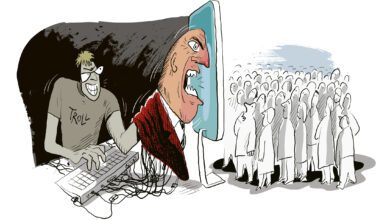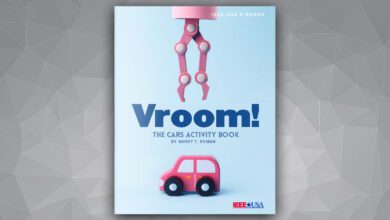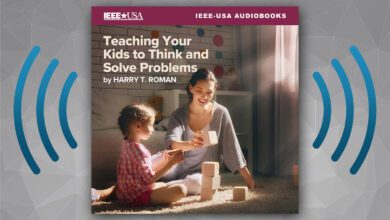
In the late 1990s, I, like many mid-career engineers, pondered whether I should go through the process of becoming a licensed professional engineer (P.E.). The entire process was a bit of a mystery. After a satisfying and successful career as a commissioned officer in the United States Air Force, I was beginning to make plans for active duty “retirement” and a second academic career. At the time I was serving as a faculty member in the Department of Electrical Engineering at the United States Air Force Academy (USAFA) in Colorado Springs.
It was a wonderful and fulfilling job, but approaching the 20-year point in my military career, I had the yearning to try new challenges. As I began to consider a second career, my top choice was to start a second educational career teaching electrical and computer engineering at a civilian university. I also hoped to serve as an engineering department head. I had judiciously studied the faculty want ads in the back of IEEE Spectrum and noted that some of the department head and dean positions required licensing as a registered professional engineer. I had also hoped to serve as a consulting engineer as an off-duty avocation. I really enjoyed working tough embedded system design problems, and thought I would enjoy doing this type of work for others. I understood that to provide consulting services also required an engineering license.
Coincidentally (actually serendipitously), John Steadman, Ph.D., P.E., was serving as a distinguished visiting professor in our department. As you may know, John has served the engineering community with distinction for many years in many high-level positions as President of the National Council of Examiners for Engineering and Surveying (NCEES) and IEEE-USA. John and I discussed the registration process on several occasions. I had also mentioned to my parents that I was considering becoming a registered engineer. My mother quickly quipped, “Any professional worth their salt is registered!” You have to understand that my mother has been a registered nurse for more than 50 years and proudly served as a commissioned flight nurse during the Korean Conflict.
As I investigated the registration process, I realized I would first have to complete the Fundamentals of Engineering (FE) examination. John suggested I check with other faculty members in the department to see if they might be also interested in pursuing registration. There were seven fellow faculty members potentially interested. John met with us and explained that the FE was an eight-hour examination, divided into two parts, offered twice a year, typically in late October and late March.
As its name implies, the FE examination tests the fundamentals of engineering in two different parts: a 120-question, four-hour morning session and a 60-question, four-hour afternoon session. All are multiple-choice style questions. The morning session covers the areas of basic science, mathematics, engineering, economics and ethics. The afternoon session is discipline specific and covers all of the primary subject areas within a given discipline. The NCEES actually provides a detailed specification of the examination on their Web site [ncees.org]. At that initial planning session, we agreed to meet for one hour a week for the year. At each meeting, one of our study group members would present a review session on a specific topic and also work through representative problems provided in NCEES study materials, as well as those provided by other publishers. The NCEES also provides a reference handbook containing key equations and information helpful during the exam.
At our first meeting, John also suggested we contact our state registration office to obtain application materials. Although the FE examination is written, published and coordinated at the national level by NCEES, it is under the jurisdiction and legislation of each individual state and territory. We found out that the application process requires attention to detail and time to arrange for the forwarding of official transcripts from universities we had attended.
The group effort worked well because we felt we owed it to each other to keep at it. All eight of us successfully passed the FE exam. John hosted a barbeque for us after the exam, and we immediately began making plans to tackle the Professional Engineering examination, since we all had at least the requisite four years of practical engineering experience. We used the same study tactics as we did for the FE exam to great success — all of us passed the PE examination. With the eight of us successfully completing the exam, the electrical engineering department at USAFA probably had the highest percentage of registered engineers for a department at that time — approximately 70 percent.
The PE examination is also an eight-hour examination. The entire examination is discipline specific. The four-hour morning session covers the breadth of a specific discipline of your choice while the afternoon session allows you to test in a discipline specialty of your choice. This is considered the depth portion of the examination. For example, for electrical engineers, the afternoon specialties available include: power; computers; or electronics, communications and control. For the P.E. examination, you are allowed to bring your own reference material. I carefully chose a key textbook from each of the different areas covered by the exam and also an engineering mathematics textbook.
As I began looking for a civilian faculty position, I proudly listed “Steven F. Barrett, Ph.D., P.E.” at the top of my resume. I accepted a faculty position at the University of Wyoming. As I look back and wonder whether the P.E. was worth the effort, I would respond with a resounding “yes.” This became evident as UW prepared for our ABET accreditation visit several years back. I found out that ABET was interested in how many registered professional engineers were in our department. Aside from my faculty position, I also perform consulting work designing embedded control systems that control entry point devices for various industrial applications. I could not have done this work without my license. I have also been asked to serve as an expert witness in a court of law. I had to politely decline since the testimony was beyond my area of technical expertise. I still hope to serve as a department head some day. My P.E. license will allow me to pursue positions in any locale.
It is interesting to note that I originally obtained my P.E. license in Colorado and was registered in that state. Upon accepting the teaching position in Wyoming, I applied for licensing in that state via a procedure called comity. This allows you to obtain registration in another state once you have completed the registration process in another state. I currently maintain active registration in Colorado and Wyoming because of the consulting work I perform.
On a side note, several years ago, I was asked to submit questions to the NCEES for use on the P.E. examination. I found this offer intriguing. As a result of submitting questions, I was asked to serve on the NCEES committee that writes and edits the P.E. examination. I have now served on this committee for several years. I consider it a great honor and I hope to work on this committee for many years to come.
The committee consists of approximately 20 registered professional engineers from industry and academia. We represent the different technical specialties within electrical and computer engineering. What we all have in common is a deep commitment and respect for our discipline and the registration process. We consider it a great honor, and also a great responsibility to construct the P.E. examinations that will be taken by our fellow engineers.
We originate some of the questions and edit those that are provided by other volunteers. Rest assured that each examination and each examination question is thoroughly reviewed by a number of dedicated professionals before it becomes part of an exam. Furthermore, each examination is subjected to a battery of post-exam statistical analyses by an external audit agency to insure each examination question measures up under the scrutiny of impartial experts.
If you, too, are considering “To P.E. or not to P.E.,” I would highly recommend investing the time. My only regret is that I waited until midway through my career to obtain my license. I forgot to mention, mom was quite pleased that I, too, was now a registered and licensed professional!
To learn more about licensure and registration, see:
IEEE-USA’s Licensure and Registration Committee
[https://ieeeusa.org/committees/lrc/]
The National Society of Professional Engineers (NSPE)
[https://www.nspe.org/]
The National Council of Examiners for Engineering and Surveying (NCEES)
[https://ncees.org/]
About the Author
Steven F. Barrett is a licensed professional engineer and the Vice Provost for Undergraduate Education (and a professor of electrical and computer engineering) at the University of Wyoming, Laramie. His research interests include embedded systems design. Barrett has a Ph.D. in electrical engineering from the University of Texas at Austin. He serves as a member of the Wyoming Board of Professional Engineers and Professional Land Surveyors. Contact him at steveb@uwyo.edu.






